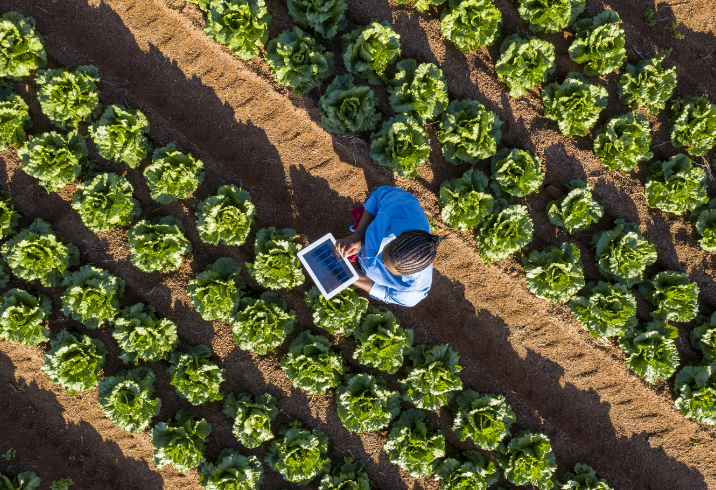Humankind has witnessed great progress, first with the industrial revolution, healthcare, information technology, followed by biotechnology, and more recently the big data revolution. Increased life expectancy, growing population and shrinking arable land have contributed to mounting pressure on traditional agriculture (and somewhat led to dispelling the agrarian myth).
The adoption of technology and extensive potential application of information technology to agriculture has led to the evolution of agriculture into Precision Agriculture.
Precision Agriculture may be defined as a set of technologies that help farmers to adopt farm operations to manage field’s variability. The goal is to optimize yield (having better nutrient content) and maximize return on investment.
Often Precision Agriculture involves satellite farming or site specific crop management based on observing, measuring, and responding to inter and intra field variability in crops.

Steps in Precision Agriculture:
The Precision Agriculture cycle can be considered to consist of the following steps or processes:
- Gather (Data Acquisition)
- Analyze (Processing the data and transform it into relevant analyzable information)
- Decide (Analysis of this data for decision making, sometimes via the agronomic model of utilization)
- Execute (Implementation/Adaptation)
Approaches in Precision Agriculture:
Broadly, Precision Agriculture can be practiced in either a Predictive Approach or a Control Approach.
The Predictive Approach is when practices are adapted prior to start of the season. The predictive approach steps can be categorized as:
1. Gather—Use historical data, such as weather data, soil data, crop status during a period; as the starting inputs.
2. Analyze—Characterize the agro-climatic context, define management zones.
3. Decide—Adjust the crop inputs, such as seeds and fertilizer source.
4. Execute —Vary the sowing density of seeds; vary the Nitrogen application within the fields.
The Control Approach is when adjustments are made during the season with an aim of optimizing the yield by reducing/optimizing the in-season requirements. The steps in control approach can be:
1. Gather—Monitor crop growth conditions during the cycle.
2. Analyze —Assess current intra-field variability.
3. Decide—Adjust the crop inputs to crop needs.
4. Execute —Vary the Nitrogen application and chemical application within the field.
Tools to Gather Data
Precision Agriculture adapts multiple technologies for advancement and betterment of agricultural practices. The tools for gathering the data that can then be analyzed for Precision Agriculture applications are as follows:
– GPS to geo-localize the field boundaries, to geo-tag field observations
– Sampling (Plant tissue sampling, Soil sampling [texture and nutrients levels analysis])
– Hand sensors and In-vehicle sensors (proxy detection) of crop status (biomass)
– Aerial/satellite remote sensing of crop status (biomass, growth anomaly)
– Combine (Yield monitoring)
Tools to Analyze Data
Based on the approach and the type of data gathered for the purpose of Precision Agriculture, processing of the data and transformation into relevant information can be done with the help of information technology and big data processing tools.
Tools to Decide
On the basis of the inputs from analysis step various models for decision making can be applied. For example, an averaging out approach may aim at averaging the yield throughout the field by reducing/controlling the field variability, this can be achieved by applying or pointing more resources, to regions where the growth lags behind the average field growth. The opposite approach would be to direct more resources (water, fertilizer, chemicals) to regions which already show better growth/performance compared to the field average.
Tools to Execute
Once the decision has been taken, various tools that can be adapted to meet the goals can be summarized as below. This can be done with the help of tractor combines, robotics or manual intervention.
What can be adjusted:
- Inputs Dose
– Seeds
– Fertilizers
– Chemicals
– Irrigation - Field Operations (time, fuel)
– Tillage
– Planting
– Fertilizing
– Spraying



